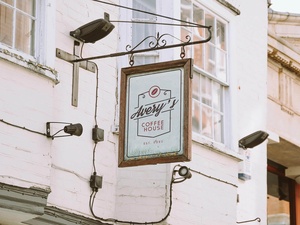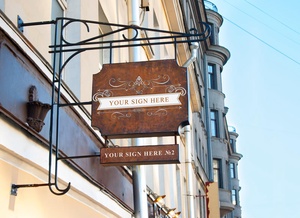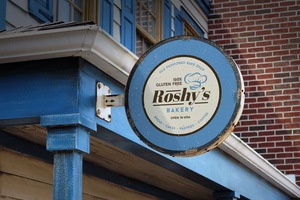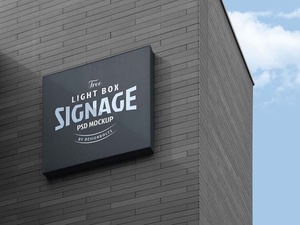Old Building Vintage Sign Mockup

Preserving the architectural heritage of a city is indeed essential for maintaining its unique character and history. Vintage and historical buildings often serve as a testament to the architectural styles and cultural significance of a particular era. Here are a few considerations when it comes to preserving and enhancing the beauty of vintage buildings, including the use of vintage signage:
-
Historical Significance: Before making any changes or additions to a vintage building, it's important to understand its historical significance. Determine whether the building is listed as a historical landmark or if it holds cultural importance.
-
Consult with Authorities: If the building is protected or considered a historical site, consult with the relevant local authorities or preservation organizations before making any modifications. There may be specific guidelines and restrictions in place.
-
Architectural Harmony: When adding or updating signage on a vintage building, strive to maintain architectural harmony. Choose signage designs and materials that complement the building's style and era.
-
Restoration vs. Renovation: Consider whether the building requires restoration or renovation. Restoration aims to bring the building back to its original condition, while renovation involves updating it for modern use. The approach may affect the type of signage used.
-
Vintage Signage: If you're aiming to maintain a vintage aesthetic, opt for signage designs that reflect the era in which the building was constructed. Vintage fonts, materials like wrought iron or wood, and hand-painted signs can add authenticity.
-
Customization: Custom vintage signage allows you to tailor the design to fit the building's unique characteristics. Work with skilled artisans or sign makers who specialize in vintage styles.
-
Maintenance: Once vintage signage is installed, regular maintenance is crucial to ensure its longevity. Periodic cleaning, repainting, or refurbishing may be necessary.
-
Local Culture and Artistry: Embrace the local culture and artistry when designing vintage signage. Incorporate elements or motifs that hold cultural significance and resonate with the community.
-
Illumination: Consider whether the vintage signage requires illumination. Classic methods like well-placed spotlights or traditional lantern-style lighting can enhance visibility without compromising the vintage look.
-
Public Accessibility: If the vintage building is open to the public, ensure that the signage provides clear directions and information. Signage should serve a functional purpose while maintaining its vintage charm.
-
Community Engagement: Involve the local community and historical societies in the preservation and signage design process. Their insights and support can be invaluable.
-
Documentation: Document the historical aspects of the building and the process of preserving or enhancing it. This documentation can be shared with the public and future generations.
Vintage signage on historical buildings not only adds to their charm but also helps convey their stories to visitors. By respecting the architectural heritage and embracing vintage aesthetics, you can contribute to the preservation and appreciation of these valuable structures in your city.






























